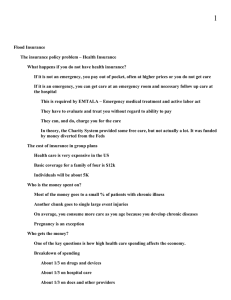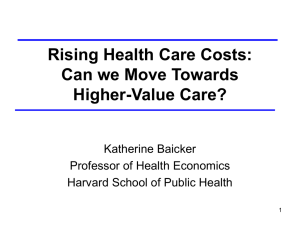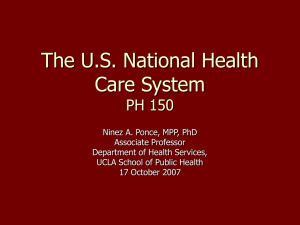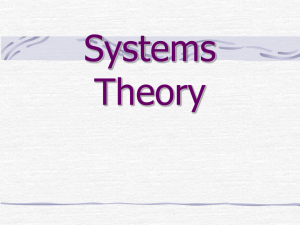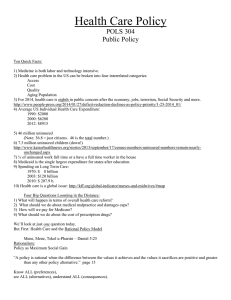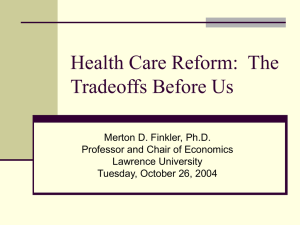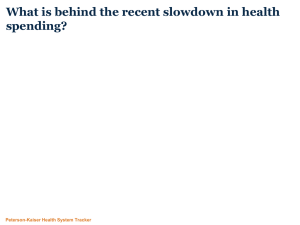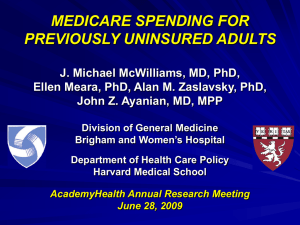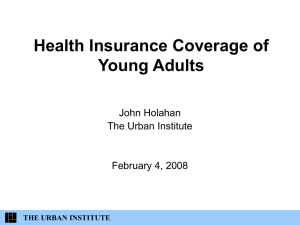Envisioned LTC Structure
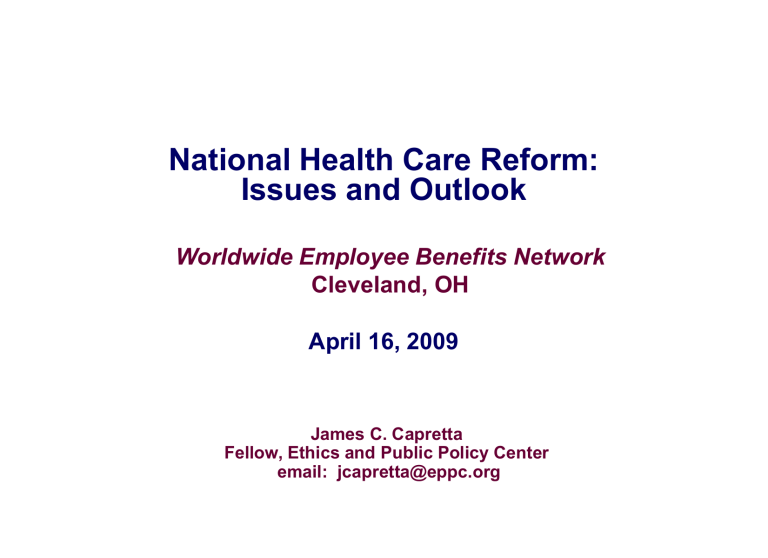
National Health Care Reform:
Issues and Outlook
Worldwide Employee Benefits Network
Cleveland, OH
April 16, 2009
James C. Capretta
Fellow, Ethics and Public Policy Center email: jcapretta@eppc.org
Content
• Issues driving reform agenda
• Outline of the emerging Congressional plan
• Issues for job-based coverage:
– Potential “pay or play” dynamic
– Minimum benefit structure
– Potential changes in the federal tax preference
• Issues to watch:
– Paygo: support for offsets?
– “Budget reconciliation”?
– Sufficient cost-side agenda?
2
The Census Data
Health Insurance Coverage, 2007
Uninsured
45 million
Military
11 million
4%
15%
Medicaid
40 million
13%
59%
Employer-
Sponsored
177 million
14%
Medicare
41 million
9%
Other Private
27 million
Source: Income, Poverty, and Health Insurance Coverage in the United States: 2007,
Census Bureau, Table C-1.
Additional Data Sources
Alternative Measures of the Uninsured
80
70
60
50
40
30
20
10
0
Full-Year Point-in-Time Ever During Year
CPS 2004 SIPP 2002 MEPS 2004 NHIS 2004
Source: “A Primer on the CPS Estimate of America’s Uninsured,” National Institute for Health
Care Management, August 2006.
Cost Pressure
National Health Spending Per Capita as a
Percentage of Household Median Income
16%
14%
12%
10%
8%
6%
4%
2%
0%
4.1%
6.2%
9.3%
11.4%
14.6%
1970 1980 1990 2000 2006
Sources: Income, Poverty, and Health Insurance Coverage in the United States: 2006, Census
Bureau, Table A-1, and CMS National Health Expenditure Data (www.cms.gov).
Firm Size, Public Insurance, and the Uninsured
Probability of Being Uninsured or Enrolled in
Public Insurance Is Inversely Related to Firm Size
35%
30%
25%
20%
15%
10%
5%
0%
< 10 10 to 24
Public Insurance
25 to 99 100 to 499 500 to 999 1000 +
Uninsured
Source: Notes, Employee Benefit Research Institute, Vol. 26, No. 10, October 2005, Figure 3.
Reform Prototype and Issues
“Universal Coverage”
Coverage
• “Pay or play” employer mandate
• “Individual Mandate” (at some point)
• New insurance subsidies (to 300 to 350% of poverty)
• Medicaid/SCHIP expansion
Regulatory Structure
Cost Escalation
Remedy
Some Key Issues
• Stabilize risk pools with national/or state-based insurance exchange system which merges individual and small group market
• New public insurance option for working age people not enrolled in a job-based plan
• Health information technology
• Emphasis on chronic disease prevention and treatment
• “Comparative effectiveness” research
• Medicaredriven “pay for performance” changes
• Minimum benefit package? How determined?
• Enforcement of an individual mandate?
• National or state exchange?
• Will cost remedies make a sizeable dent?
• Political support for financing sources?
• Will a public plan option crowd out private coverage?
The Massachusetts Connector
Eligible
Enrollees
Non-
Working
Individuals
Sole
Proprietors
Small
Business
Employees
(under 50)
Non-Offered
Individuals
The
Connector
Insurers
BC/BS
Harvard
Pilgrim
Tufts
Fallon
New
Entrants,
Others
Some Key Features
• Merges individual and small group markets.
•
Takes premiums and pays insurers on behalf of eligible enrollees.
• Full federal tax preference retained for workers in small businesses.
•
Annual open enrollment.
•
Will receive premium subsidies from state for
100%-300% of poverty enrollees.
• Young enrollee products.
Federal Tax Preference for Job-Based Plans
2007 Total = $246.1 (billions)
Federal Payroll
Taxes
$100.7
$145.3
Federal Income
Taxes
Source: “Tax Expenditures for Health Care,” Joint Committee on Taxation,
JCX-66-08, July 30, 2008.
The Income Distribution of the Tax Preference
Average Savings Per Tax Return (2007)
$5,000
$4,504
$4,634
$4,385
$4,000
$3,972
$3,000
$3,106
$2,000
$2,008
$2,502
$1,000
$625
$0
< $10k $10k -
$30k
$30k -
$50k
$50k -
$75k
$75k -
$100k
$100k -
$200k
Adjusted Gross Income
$200k -
$500k
> $500k
Source: Tax Expenditures for Health Care, Joint Committee on Taxation, JCX-66-08,
July 30 2008, p. 5.
Potential “Pay or Play” Dynamic
“Pay or Play”
Employer Tax
$ Spent on
Health
Coverage
Per Worker
Employer-Sponsored Insurance (ESI)
Premium Per Worker
Pay or Play Tax <
ESI Cost
Pay or Play Tax >
ESI Cost
Average Wage Per Employee
11
Budget Reconciliation
• Process for “reconciling” program spending within a Committee’s jurisdiction with the spending allocation assumed in the budget resolution.
• Typically, committees are given to a date certain to report legislation meeting their target
• The “Byrd Rule” allows removal of
“extraneous” provisions from a
“reconciliation” measure. Can a coherent health-care reform bill work with the Byrd Rule in effect?
Laws Enacted Via
Reconciliation
• 1981 spending reduction plan (Reagan).
• 1993 tax and budget plan
(Clinton)
• 1997 Balanced Budget Act
(Clinton-Gingrich)
• 2001 tax cut (Bush)
The bottom line: budget reconciliation process allows bills to pass in the U.S. Senate with 51, instead of 60, votes.
12
Pay-As-You-Go
Entitlement Cuts + Tax Increases = >
Entitlement Increases + Tax Cuts
(Ten-Year Test)
Per Year
Premium Discounts for Households
Below 300/350% of Poverty ~$150 B
Limit Tax Deductions for Charitable
Contribution and Home Mortgage
Interest for High Earners - $30-40 B
Cuts for Medicare Advantage Plans - $20-30 B
Other Medicare Changes -$10-20 B
“Tax Cap” for Employer-Paid Premiums -$30-40 B
13
Longer Range Federal Cost Projections
9.0
8.0
7.0
6.0
5.0
Medicaid
4.0
3.0
2.0
1.0
Medicare
0.0
2007 2009 2011 2013 2015 2017 2019 2021 2023 2025 2027 2029
Source: The Long-Term Budget Outlook, CBO, December 2007 (extended baseline scenario).
14
The Cost-Side Agenda
The Issue
Per Capita Spending Growth
1975 to 2005
Medicare
Medicaid
Other Health
Care
Real Per
Capita Cost
Growth
4.6%
4.4%
4.1%
Excess
Cost
Growth*
2.4%
2.2%
2.0%
*Excess Cost Growth is per capita spending growth rate in excess of per capita GDP growth.
The Remedies
“Engineering” a More Cost-
Effective Delivery System:
– Health Information
Technology
– Comparative
Effectiveness Research
– Reimbursement Reform
(Pay for Performance,
Value- Based
Purchasing)
Sufficient?
*Source: The Long-Term Outlook for Health Spending, CBO, November 2007.
